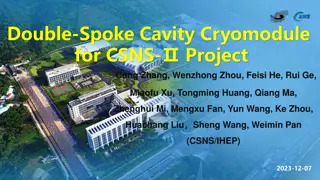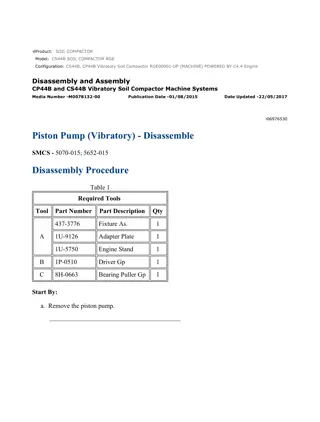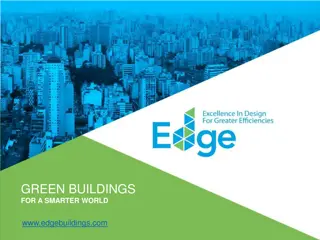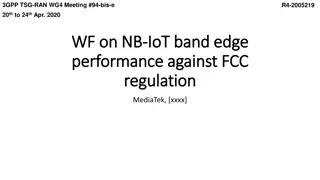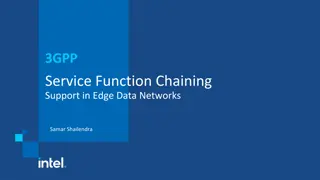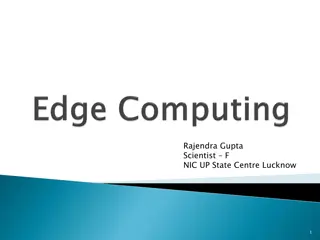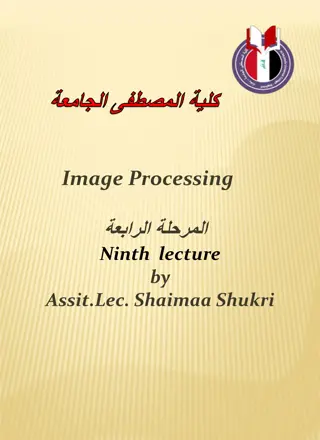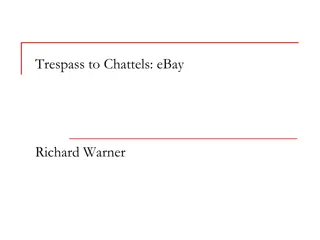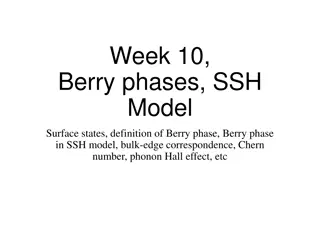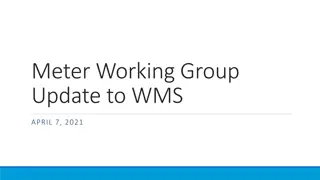
RGE-EDGE Review Cycle and Package Information
"Learn about the RGE-EDGE review process for Research and Development Scientists, including schedule, package contents, and guidelines. Get insights on mandatory classification reviews and periodic evaluations."
Download Presentation

Please find below an Image/Link to download the presentation.
The content on the website is provided AS IS for your information and personal use only. It may not be sold, licensed, or shared on other websites without obtaining consent from the author. If you encounter any issues during the download, it is possible that the publisher has removed the file from their server.
You are allowed to download the files provided on this website for personal or commercial use, subject to the condition that they are used lawfully. All files are the property of their respective owners.
The content on the website is provided AS IS for your information and personal use only. It may not be sold, licensed, or shared on other websites without obtaining consent from the author.
E N D
Presentation Transcript
Preparing for your RGE-EDGE Review Steve Hilburger and Mark Miller RGE-EDGE Senior Scientists Office of Science Quality and Integrity (OSQI) 2024 Winter Review Cycle (Nov 15 Submission) RGE mailbox rge-edge@usgs.gov RGE website www.usgs.gov/rge-edge U.S. Department of the Interior U.S. Geological Survey
RGE and EDGE Definitions RGE: Research Grade Evaluation Research Scientists ~1,000 RGE scientists OPM RGE Guide (2006) EDGE: Equipment Development Grade Evaluation Development Scientists ~45 EDGE scientists OPM EDGE Guide (1968) 2
RGE-EDGE Review Mandatory and periodic classification review of Permanent scientists Administered by OSQI in collaboration with the Office of Human Resources Reviewed by panels of scientific peers who meet, discuss, and reach consensus Sum of scores from factors 1 4 maps to a grade 3
Review Schedule and Frequency Frequency varies with grade GS-9 (EDGE) or GS-11 (RGE) to GS-13: every 4 years GS-14: 6 years GS-15: 7 years Early reviews scheduled with center director approval Delayed reviews possible, typically limited to: Personal / health issues, or Temporary assignments away from research Require center director approval 4
Annual Calendar (as of late 2022) Two RGE-EDGE cycles per year, each with ~100+ scientists reviewed; ~15+ panels held Summer Cycle April 15 Intent to Submit Deadline (for ALL additions to May schedule including early reviews and conversions) May 15 submission date Panels meet ~July through ~November Winter Cycle October 15 Intent to Submit Deadline (for ALL additions to Nov schedule including early reviews and conversions) November 15 submission date Panels meet ~February through ~May 5
What is in an RGE-EDGE package? Research or Development Scientist Record List of references, including supervisor and center director Three significant contributions (as attachments) Approval Sheet signed by CD, supervisor, and scientist Supervisory letter of support (Optional) External Impact Statements (Optional) CD Reclassification Letter (Required for reclassifications) Templates and guidance on www.usgs.gov/rge-edge 6
Planning for your RGE-EDGE review Review Planning for your Submissiondocument Read carefully the criteria used for scoring OPM RGE Guide (all) OPM EDGEGuide (pages 42 60) and EDGE checklist If you re a GS-15, the Degree G Criteria Give yourself time Write clearly and concisely; use plain language Have colleagues, supervisor, Center Director review 7
Scientist Record Outline Scientist Background Written Narratives (length limits) Research Environment Four Factor Narratives Three Significant Contributions Supporting Information Bibliography, Presentations, Service, Awards, etc. Reference List Please don t change the headings 8
Scientist Background Name (pronouns, optional) Classification Title, Series, and Grade Center Name Duty Station Date of Entrance to Federal Service Date of Last Promotion Review Cycle Submitted Up to 5 descriptive phrases that characterize your research and specialties (e.g., aquatic trophic interactions, heavy metal isotopes, earthquake wave propagation Avoid general terms such as hydrology, ecology, and geology.) 9
Research or Development Environment An abstract to your position Do not include: A lot of detail Very high-level summary Lengthy lists of: Projects Accomplishments or impacts Awards or recognition Amounts of funding Scope of research/development Primary collaborators Major sources of funding 10
Factor Narratives - Overview Allows you to directly address each of the four factors. Tips: Become familiar with OPM Guide criteria but avoid focusing on aspirational phrases from the Guide. Focus factors 1, 2, and 3 on current and recent work (see guidance document). Describe specific evidence; avoid making a general statement followed by numerous citations. Factor 4 can cover full career, but focus on recent. Focus on clear descriptions of your work and your role. Do not include images, diagrams, pictures, or illustrations. Claims made in the narrative must be substantiated in the record. 11
Factor I: Research Assignment Focus on: Tips: Scope and complexity Keep to current assignment: last ~4, ~6, or ~7 years; or since last promotion if shorter General types of methods used Importance of expected results Discuss the norm of the assignments rather than atypical projects Scientific leadership team, supervisory, and administrative responsibilities Don t include specific accomplishments Discuss your specific role 12
Factor II: Supervisory Controls Focus on: Tips: Keep to current assignment: last ~4, ~6, or ~7 years; or since last promotion if shorter Degree of personal responsibility Authority to act independently Don t include supervision that you provide Supervision can come from sources other than direct supervisor Level of approval required Technical supervision required At higher levels, the scientist has the autonomy to influence high-level (DOI) scientific directions 13
Factor III: Guidelines and Originality Focus on: Tips: Preexisting knowledge available Keep to current assignment: last ~4, ~6, or ~7 years; or since last promotion if shorter Explain how your work is original Specific examples are highly useful to panels How you demonstrated originality Methods and approaches rather than products and impacts 14
Factor IV: Contributions, Impact, Stature Focus on: Tips: Includes your entire career; recency is important to receive full credit Scientific contributions publications, datasets, tools, code, presentations, testimony, strategic planning, special assignments Discuss how your work is: Changing the way people think or act Advancing scientific understanding Advancing the USGS and DOI Mission Protecting and advancing the health, safety, economic vitality, or ecological integrity of society Impact to society, agency, or science Stature and standing invitations, elected positions, awards, recognitions, selection to lead teams 15
Focus on Impacts Former tendency for panels to over-rely on numbers of publications and reputation of outlets Panels consider all scoring criteria, not just publications Panels consider both impact and outputs 16
Three Significant Contributions Should help panel assess your recent impact and major career achievements May be publications, datasets, scientific tools, patent, code, presentations, testimony, strategic planning, and special assignments. Avoid in-press publications (impact is uncertain) Background, Role, Results, Impact Use concise, plain language Pre-USGS publications OK 17
Length Limits for Narratives RSR/DSR Section Characters Allowed Page Length Res./Dev. Env.: 2,500 (~3/4 page) Factor 1: 7,000 (~2 pages) Factor 2: 3,500 (~1 page) Factor 3: 7,000 (~2 pages) Factor 4: 14,000 (~4 pages) Contributions: 10,500 (~3 pages) Total: 44,500 (~12 13 pages) Including spaces These are LIMITS, not targets 18
Supporting Information (slide 1) A. Current and Recent Projects (brief descriptions) B. Bibliography Published products Products approved for publication (have BAO approval) Unpublished technical reports Submitted manuscripts include data releases; see Guidance include relative % contributions for Concept, Data, Interpretation, Writing; see Guidance C. Presentations Invited or noteworthy (entire career) Contributed presentations (last 10 years) D. Professional and Scientific Service E. Academic Service 19
Supporting Information (slide 2) F. Technical Training Provided G. Awards and Recognition (research- or development-related awards) H. Special Assignments I. Inventions and Patents** J. Outreach and Media Coverage K. Previous Professional Positions L. Education** External Impact Statements (optional; see specific guidance) ** these sections differ between RGE and EDGE 20
References Consider including a range of collaborators, cooperators, partners and people who have been impacted by your science. Supervisor & Center Director (required) Panelists will contact at least 4 CD, Supervisor, and 2+ Recommend that you contact references prior to listing them. Consider sharing your documentation with them. List at least 6 references and their specific professional relationship to you. Collaborator on wormhole project End user of SPYDER model Panelists may contact people other than your references in certain situations. Supervisor / CD turnover? Feel free to list both current and former with notes 21
Approval Sheet and Signature Your supervisor AND Center Director will review and verify Accuracy Use of clear language Section length limits Use of IPDS numbers BAO approval dates Electronic/pen signatures OK Multiple copies OK 22
Ready to submit? Refer to Planning for your Submissiondocument When package is complete Email to submit_rge-edge@usgs.gov You will receive confirmation of receipt Submit all files by email, if possible Break into multiple emails if needed Contact us for extreme file size issues If prompted, decline Outlook s suggestion to submit OneDrive links instead; please actually attach the files Use rge-edge@usgs.gov for general questions 23
Dynamic Peer Groups Scientists do not pre-select peer group Panels formed based on expertise of the scientists to be reviewed in each cycle Use program to cluster packages into groups with similar expertise, followed by human curation Result in better panel composition More efficient panel development 24
Panel Findings Written description of the score (typically 3-5 pages) How each factor score was determined Framed in terms of OPM Guide criteria Why the higher score was not awarded The panel did not see evidence of [guide criteria] The factor fully meets but does not exceed level C Goal to be more explicit, less subtle No prescription ("you should focus more on....") 25
For example Aldo s research requires subdivision into separate phases, including some that are themselves considerably broad and complex. In one example, he measured the response of laughing gull populations to rapid changes in parking lot extent and French fry availability, including publications by Leopold and others (2019, 2020, and 2021). Aldo s paper on the relative influences of environmental and anthropogenic stressors on the regional distribution of Canada geese utilized unconventional and novel approaches by combining biological and golf course data sets. The problems that he addresses, such as linking avian population trends to a range of variables, including land use change and the availability of nutritional subsidies, are difficult to define. Aldo s work on sandhill cranes resulted in a series of products that are definitive of the field (see Leopold 2022 and Leopold 2023). The panel found that Aldo s research assignment exceeds the level C criteria, but does not fully meet level E. The panel did not find evidence of the current assignment being exceptionally difficult and unyielding to investigation, or that research products are expected to result in major advances consistent with level E. Therefore, level D applies, and 8 points are credited for factor 1. 26
When will you receive your results? It varies! Planning to evaluate 100+ scientists over 15+ panels. Panels held ~February through ~May. Individual results send to Center Directors after each panel. Specific timing depends on the overall schedule of panels. 27
Disagree with your results? You have options. Discuss with your supervisor / Center Director Engage with RGE-EDGE Coordinators at OSQI Early review (before next required review) Classification review by Human Resources 28
Resources www.usgs.gov/rge-edge Planning for your Submission document OPM s RGE Guide and EDGE Guide EDGE checklist and Degree G criteria Training materials (these slides) Current Scientist Record templates (Mar 2023) and associated guidance (June 2024) External Impact Statement guidance Approval Sheet 29
Contacts RGE-EDGE Coordinators Cara Campbell ccampbell@usgs.gov Steve Hilburger shilburger@usgs.gov Mark Miller mpmiller@usgs.gov Alfredo Aretxabaleta aaretxabaleta@usgs.gov Shared RGE-EDGE mailbox rge-edge@usgs.gov Human Resources related to RGE-EDGE Servicing Personnel Office 30




